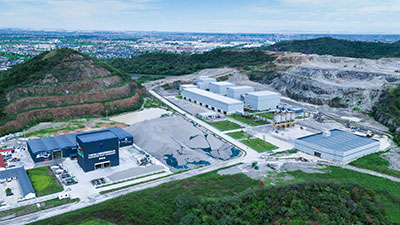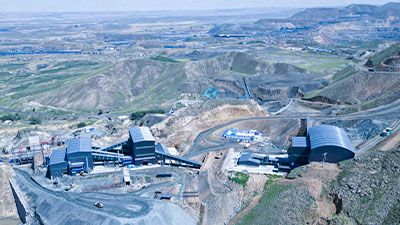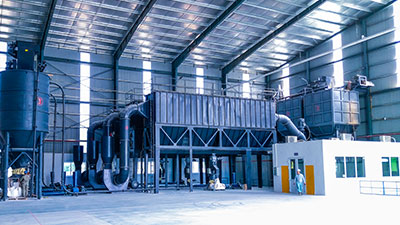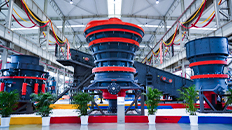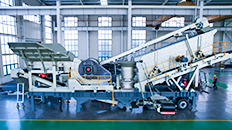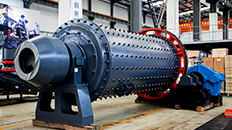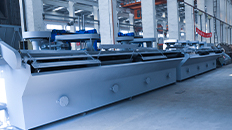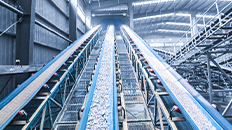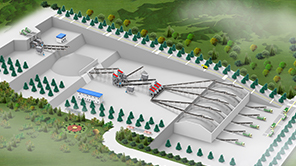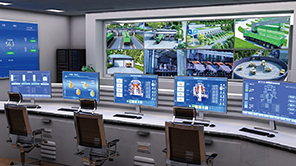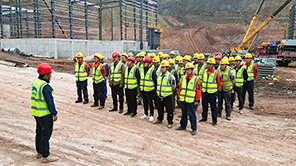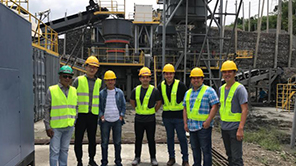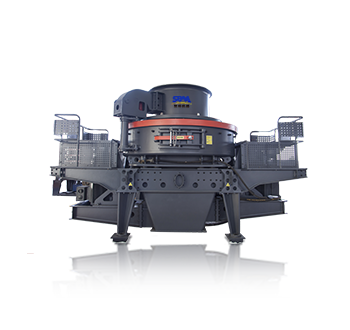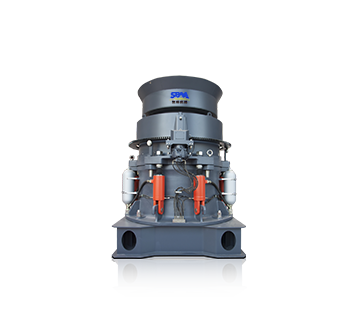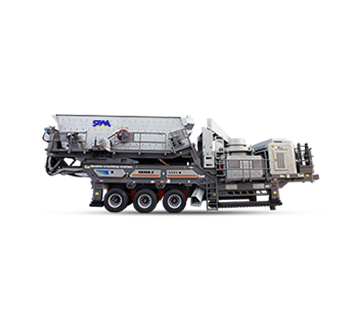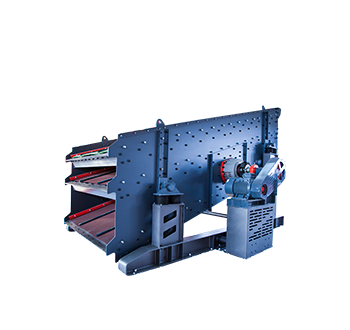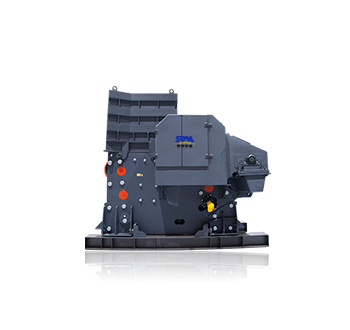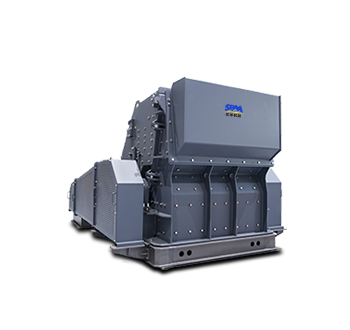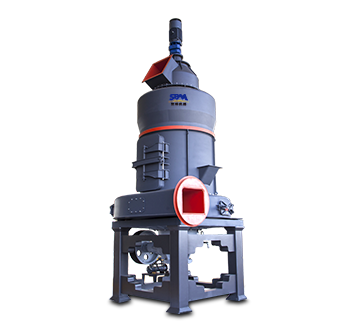Summary:This comprehensive page covers key aspects of jaw crusher technology to help your mine or quarry become more productive.
The jaw crusher is one of the most commonly used crushing equipment in industrial processes worldwide. As the primary crusher in many quarrying and mining operations, it effectively breaks down oversized feed material into smaller output sizes. Versatile and reliable, jaw crushers have proven to be indispensable equipment for many industries that require aggregate processing.
This comprehensive page covers the key aspects of jaw crusher technology. You will find information on the working principle, design features, types and applications of jaw crushers. Operational factors such as performance, maintenance and cost considerations are also discussed. The aim is to provide a detailed reference guide on one of the most prolific commercial crushing machines, helping users get the most from their jaw crusher investments.
How Does A Jaw Crusher Work?
A jaw crusher is a type of mechanical equipment that is used in the mining and construction industry to crush rocks and large materials into smaller pieces. The jaw crusher works by using a moving jaw and a fixed jaw to crush and grind the rocks. The material is fed into the jaw crusher by a vibrating feeder, and then it is crushed between the two jaws.

The jaw crusher is made up of several parts, including a fixed jaw, a moving jaw, and a toggle plate. The fixed jaw is mounted to the frame of the jaw crusher, and the moving jaw is mounted to the pitman. The pitman is a moving component that is connected to the toggle plate by a series of levers. The toggle plate is responsible for transmitting the power from the pitman to the moving jaw.
The moving jaw is mounted on an eccentric shaft, which allows it to move up and down in a circular motion. As the moving jaw moves down, it crushes the material against the fixed jaw. The material is then discharged from the bottom of the jaw crusher, and it is ready for further processing.
There are several types of jaw crushers available on the market, including single-toggle jaw crushers, double-toggle jaw crushers, and overhead eccentric jaw crushers. Single-toggle jaw crushers are the most common type, and they are designed with a large feed opening and a simple toggle mechanism. Double-toggle jaw crushers are more advanced, and they have a more complex toggle mechanism that allows for more precise control of the crushing process. Overhead eccentric jaw crushers are less common, but they are designed with an eccentric shaft that causes the moving jaw to move in a more circular motion, which allows for a more efficient crushing process.
The working principle of a jaw crusher is that when the jaw rises, the angle between the fixed jaw and the moving jaw becomes larger, and the materials can be crushed. All jaw crushers feature two jaws: one of which is fixed while the other moves. The working principle of jaw crushers is based on the reciprocating movement of the movable jaw that compresses and crushes the rock or ore between itself and the fixed jaw, as the material enters the zone between the jaws.
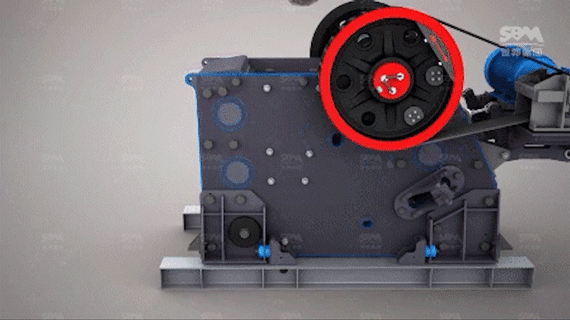
The crushing process takes place when the feed material between the two jaws is compressed and crushed by the moving jaw. As the moving jaw moves away from the fixed jaw, the crushed material is discharged from the crusher at the bottom, with the size of the discharged material determined by the gap between the jaws.
The crushing action of a jaw crusher is caused by the motion of its swing jaw. The swing jaw moves back and forth by a cam or pitman mechanism, acting like a nutcracker or a class II lever. The volume or cavity between the two jaws is called the crushing chamber. The movement of the swing jaw can be quite small, since complete crushing is not performed in one stroke. The inertia required to crush the material is provided by a weighted flywheel that moves a shaft creating an eccentric motion that causes the closing of the gap.
Jaw crushers are usually constructed in sections to ease the process transportation if they are to be taken underground for carrying out the operations. Jaw crushers are classified on the basis of the position of the pivoting of the swing jaw. Blake crusher-the swing jaw is fixed at the upper position; Dodge crusher-the swing jaw is fixed at the lower position; Universal crusher-the swing jaw is fixed at an intermediate position.
Jaw Crusher VS. Impact Crusher VS. Cone Crusher
Jaw crusher, impact crusher, and cone crusher are widely used in the mining and construction industries for crushing various materials. Each type of stone crusher has its unique characteristics and advantages, making them suitable for specific applications.
This article presents a comprehensive comparison between jaw crusher, impact crusher and cone crusher, highlighting their differences in terms of structure, working principles, crushing capabilities, and applications.

1. Structure and Working Principle
Jaw Crusher: Jaw crushers have a fixed jaw plate and a movable jaw plate. The movable jaw plate moves back and forth against the fixed jaw plate, crushing the material by compressing it between the two plates.
Impact Crusher: Impact crushers consist of a rotor with hammers or blow bars that spin at high speed. When the material enters the crushing chamber, it is struck by the hammers or blow bars and thrown against the impact plates, breaking it into smaller pieces.
Cone Crusher: Cone crushers have a conical-shaped crushing chamber with a mantle and a concave. The material is fed into the chamber and crushed between the mantle and concave as the mantle gyrates within the chamber.
2. Application Range
Jaw Crusher: Jaw crushers are commonly used for primary crushing in various industries, including mining, quarrying, and recycling.
Impact Crusher: Impact crushers are versatile and suitable for primary, secondary, and tertiary crushing. They are widely used in mining, quarrying, and construction.
Cone Crusher: Cone crushers are commonly used for secondary and tertiary crushing in applications such as quarrying, mining, and aggregate production.

3. Crushing Efficiency and Particle Shape
Jaw Crusher: Jaw crushers are known for their high crushing efficiency and can produce a relatively coarse particle shape. They are suitable for primary crushing of hard and abrasive materials.
Impact Crusher: Impact crushers are efficient in crushing materials with high compressive strength. They produce a cubical particle shape and are suitable for secondary and tertiary crushing applications.
Cone Crusher: Cone crushers are renowned for their ability to produce a well-graded and cubical particle shape. They are suitable for secondary and tertiary crushing, offering excellent particle shape control.
4. Capacity
Jaw crushers have a relatively lower capacity compared to cone crushers and impact crushers. They are suitable for small to medium-sized rocks and materials. The capacity of a jaw crusher is determined by the size of the feed opening and the eccentric throw of the movable jaw.
Generally speaking, impact crushers have a higher capacity compared to jaw crushers but a lower capacity compared to cone crushers. They are suitable for primary, secondary, and tertiary crushing. The capacity of an impact crusher is determined by the rotor diameter, rotor speed, and the gap between the impact plates and blow bars.
Cone crushers have a higher capacity compared to jaw crushers and impact crushers. They are designed for efficient secondary and tertiary crushing and can handle large volumes of material. The capacity of a cone crusher is determined by the closed side setting (CSS) and the size and shape of the crushing chamber.
5. Input Size
Jaw crushers can accept larger feed sizes compared to cone crushers and impact crushers. They have a larger feed opening, which allows for the entry of larger-sized rocks and materials.
Impact crushers have a smaller feed opening compared to jaw crushers and cone crushers. They are designed to accept smaller-sized rocks and materials. The input size of an impact crusher depends on the type of rotor and the configuration of the crushing chamber.
Cone crushers can accept a wide range of feed sizes. They have a conical-shaped crushing chamber that gradually narrows as the material progresses towards the bottom. This design allows for the entry of various-sized rocks and materials.
6. Output Size
The output size of a jaw crusher is determined by the distance between the jaws at the top and the bottom of the crushing chamber. Jaw crushers are capable of producing a relatively coarse output size. The final product size can be controlled by adjusting the gap between the jaws.
Impact crushers produce a cubical output size. The final product size is determined by the gap setting between the impact plates and blow bars, as well as the rotor speed. Impact crushers are capable of producing a range of output sizes, depending on the specific application and desired end product.
Cone crushers are known for producing a well-graded and cubical output size. The final product size is determined by the CSS and the position of the mantle in relation to the concave. Cone crushers provide excellent control over the particle shape and size distribution.
7. Maintenance and Operating Costs
Jaw Crusher: Jaw crushers have relatively low maintenance requirements and operating costs. However, they consume more power compared to impact and cone crushers.
Impact Crusher: Impact crushers require moderate maintenance and have moderate operating costs. They are energy-efficient and offer good cost-effectiveness.
Cone Crusher: Cone crushers have higher maintenance requirements but generally lower operating costs compared to jaw and impact crushers. They are energy-efficient and can provide cost savings in the long run.
Jaw crushers, impact crushers, and cone crushers have distinct characteristics andadvantages that make them suitable for different crushing applications. Jaw crushers excel in primary crushing of hard and abrasive materials, while impact crushers are efficient in secondary and tertiary crushing, offering a cubical particle shape. Cone crushers provide excellent particle shape control and are suitable for secondary and tertiary crushing.
Factors such as crushing capacity, maintenance requirements, operating costs, and application range should be considered when selecting the appropriate crusher for a specific task. It is important to consult industry experts and review product specifications to make informed decisions regarding crusher selection.
How To Reduce The Operating Cost Of Jaw Crusher?
Jaw crusher is critical machines in the mining and quarrying industries, responsible for the essential first stage of size reduction. These robust, reliable crushers play a pivotal role in transforming raw mined materials into valuable commodities. However, to maintain profitability and competitiveness, mining operations must constantly seek ways to optimize the performance and reduce the operating costs associated with the jaw crusher.
This comprehensive guide explores various strategies and best practices to help mining operators lower the overall costs of running jaw crushers. By addressing key factors such as energy consumption, wear part management, maintenance, and process optimization, this article provides a roadmap for enhancing the efficiency and cost-effectiveness of jaw crusher operations.

Energy Consumption Optimization
Reducing the energy consumption of jaw crushers is a primary focus for cost savings, as electricity can account for up to 50% of the total operating costs.
- Implement Energy-Efficient Motors
- Optimize Crusher Settings
- Implement Variable Frequency Drives (VFDs)
- Improve Feed Consistency
- Conduct Regular Maintenance
Wear Parts Management
Effective management of wear parts is crucial for controlling costs and maintaining the crusher's performance.
- Utilize Wear-Resistant Liners
- Implement a Planned Replacement Program
- Monitor Wear Patterns
Maintenance And Downtime Optimization
Scheduled and unplanned downtime present significant opportunities for cost reduction through effective maintenance strategies.
- Condition Monitoring
- Preventive Maintenance
- Maintenance Optimization
- Component Standardization
- Outsourcing
Process Optimization
Crushing-circuit design impacts productivity and costs. Periodic reviews identifying areas for:
- Improved Material Flow
- Optimal Sizing
- Scalping Inclusion
- Lubricant Selection
- Impact-Attachment Usage
The Proper Speed for Jaw Crusher
Factors Influencing Jaw Crusher Speed
The optimal speed for a jaw crusher typically ranges between 200 to 400 RPM. However, the exact speed can vary based on several factors, including the design of the crusher, the type of material being processed, and the desired product size.

Several critical factors influence the optimal speed for a jaw crusher, each playing a significant role in determining the efficiency and effectiveness of the crushing process. Understanding these factors can help operators optimize their equipment for various materials and desired outcomes.
1. Material Characteristics
The physical properties of the material being crushed significantly impact the optimal speed of the jaw crusher.
2. Crusher Design
The design of the jaw crusher itself plays a crucial role in determining the optimal speed.

3. Desired Product Size
The target size of the crushed material is another critical factor influencing the operating speed.
Ways To Improve The Performance Of Jaw Crusher
Everyone wants to make the most of their equipment, and jaw crusher operators are no exception. There are several factors that will affect the performance of the crusher, thereby affecting the entire circuit. Here are some ways to help you avoid production losses.
Avoid Bridging
Continuous bridging of the feed zone of the jaw crusher is a common problem.
Bridging refers to stones that prevent water from entering or moving down to the crushing chamber. This may be because there is only one stone larger than the feed opening, or many stones of average size cross each other and block the feed of the crusher.
Bridging can result in major production losses that are often overlooked. Note that the bridging of the feed area of the primary crusher is relevant, as it may take several minutes to resolve the problem (large rocks are removed, broken, or directly into the chamber). If it happens ten times a day, it will quickly cause one hour of production loss.
If this happens, for example, in one of our crusher models, C130 has a working capacity of 352 short tons per hour (stph), and assuming $12 per short ton, the daily loss can easily increase to 4000 Dollar.
Through strict control of the blasting grid to avoid the generation of excessively large materials, bridges can be avoided, truck loader operators are trained to separate the oversized materials in the pit, as well as the primary crushing equipment operators, by changing the feeder speed and using the installation in the The hydraulic hammer in the area visualizes the material flow to the crusher and controls the speed and direction of the stone.
Apply the Correct Jaw Mold Shape
Having a suitable jaw mold shape can save more than 20% of production capacity, otherwise it will be a loss.
There are many types of rocks, and there are differences in crushability, wear resistance, and flake shape. Choosing the best combination of fixed jaw and movable jaw mold shapes will help optimize production when crushing difficult-to-process materials. Rocks with lower crushability require closer occlusal angles to maintain the designed bearing capacity. Highly abrasive rocks require thicker, heavier, and longer-life jaw molds to avoid production losses caused by frequent replacements. The flake rock needs a tooth-shaped jaw mold to crush it into more cubes to avoid stopping by bridging and belt cutting along the crushing circuit.
Monitor the Condition of the Jaws
In addition to being an important part of machine performance, the jaw of the jaw crusher is also responsible for the protection of the front frame and the swing jaw. Wear is usually due to increased crushing angle, tooth profile loss, CSS reduction to compensate for possible laminar effects, etc., resulting in production losses. This is why the crusher needs to be monitored throughout its life cycle.
Since excessive wear can result in a 10-20% reduction in output, it is very important to find the best time for jaw rotation or replacement from a cost and benefit point of view.
Jaw Crusher Parts
Jaw crushers are essential pieces of equipment in the construction, mining, and quarrying industries. They are used to crush large materials into smaller pieces, which can then be processed for further use or disposal.
The main parts of a jaw crusher include:
- Frame
- Flywheel
- Jaw Plates
- Toggle Plate
- Cheek Plates
- Pitman
- Eccentric Shaft
- Adjustment Wedge
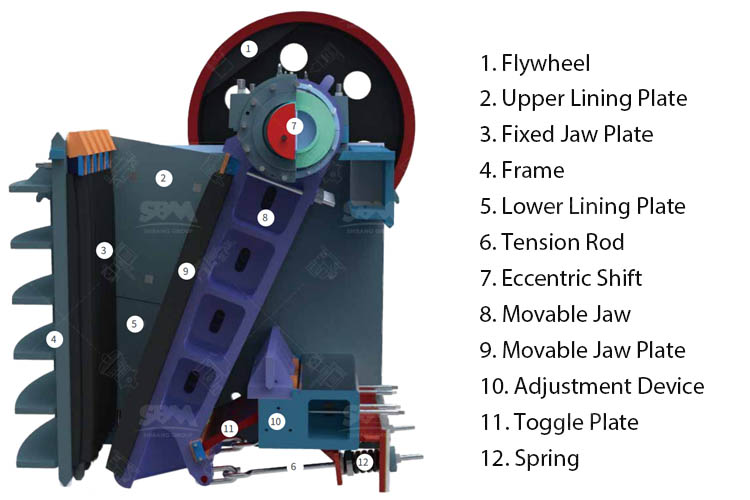
1. Frame
The frame is the main structural component of the jaw crusher and is responsible for supporting the other parts of the machine. It is typically made of welded steel or cast iron and is subjected to a great deal of stress and strain during operation. The frame supports the eccentric shaft, which is a rotating shaft driven by an electric motor or a diesel engine. The eccentric shaft is connected to the flywheel, which helps to balance the load on the crusher and transmit the power from the motor to the crushing mechanism.

2. Flywheel
The flywheel is a large, heavy wheel that is attached to the end of the eccentric shaft. It helps to balance the load on the crusher and transmit the power from the motor to the crushing mechanism. The flywheel is typically made of cast iron or steel and is subjected to a great deal of wear and tear during operation.

3. Jaw Plates
The jaw plates are the primary wear parts of the jaw crusher and are responsible for crushing the material as it is fed into the crushing chamber. They are typically made of manganese steel or another hard material and are subjected to a great deal of wear and tear during operation. The jaw plates are designed to be easily replaceable, so that they can be replaced when they become worn or damaged.
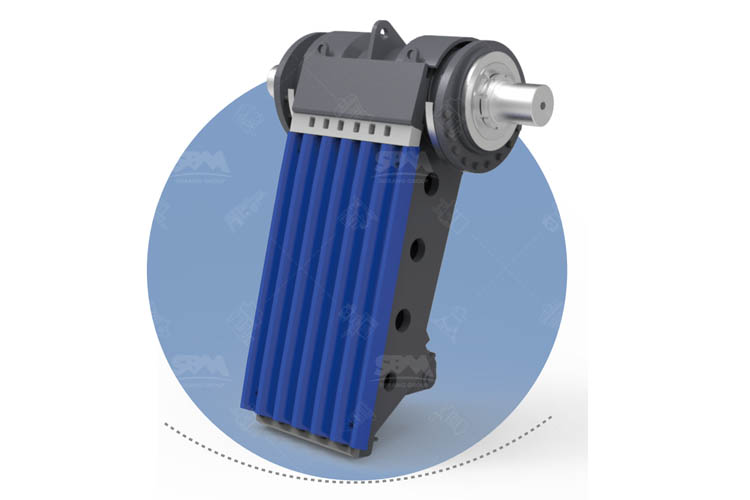
4. Toggle Plate
The toggle plate is a component that connects the pitman to the cheek plates and helps to transfer the force from the pitman to the cheek plates during the crushing process. It is typically made of cast iron or steel and is subjected to a great deal of wear and tear during operation. The toggle plate is an important safety feature of the jaw crusher, as it helps to prevent accidents by breaking the connection between the pitman and the cheek plates if the crusher becomes overloaded.
5. Cheek Plates
The cheek plates are located on either side of the jaw crusher and are used to crush material against the stationary jaw. They are typically made of manganese steel or another hard material and are subjected to a great deal of stress and strain during operation. The cheek plates are an important part of the jaw crusher, as they help to guide the material as it is fed into the crushing chamber and prevent it from falling out.
6. Pitman
The pitman is the main moving component of the jaw crusher and is responsible for transferring the force from the toggle plate to the crushing mechanism. It is typically made of cast iron or steel and is subjected to a great deal of stress and strain during operation. The pitman is connected to the eccentric shaft via the toggle plate and is supported by the cheek plates. It moves up and down as the eccentric shaft rotates, crushing the material as it passes through the crushing chamber.
7. Eccentric Shaft
The eccentric shaft bearings are located at the ends of the eccentric shaft and help to support the shaft as it rotates. They are typically made of high-quality bearings and are subjected to a great deal of wear and tear during operation. The eccentric shaft bearings help to reduce the friction between the eccentric shaft and the frame, allowing the crusher to operate smoothly and efficiently.
8. Adjustment Wedge
Adjustment Wedge: The adjustment wedge is a component of the jaw crusher that is used to adjust the size of the discharge opening. It is made of high-strength steel and is responsible for moving the toggle plate and the toggle plate seat.
In conclusion, the main parts of a jaw crusher include the frame, the eccentric shaft, the flywheel, the toggle plate, the cheek plates, the jaw plates, the pitman, the eccentric shaft and adjustment wedge. These components work together to crush large materials into smaller pieces, which can then be processed for further use.
Six Major Differences Between Jaw Crusher And Impact Crusher
Jaw crusher and impact crusher are common equipment used in aggregates industry. But a lot of people may not know them very well, especially for users starting in this field.
We often get asked this question, today we'll talk about the difference between these two crushers.
The obvious difference between jaw crusher and impact crusher is in structure and working principle.

The working mode of the former is flexural extrusion, and the material is crushed in crushing chamber composed of moving jaw and fixed jaw. The latter adopts the principle of impact crushing. The material is repeatedly smashed between the rotor (plate hammer) and the counter plate.
Many people should be familiar with the principle. So today we will focus on the analysis of their differences in actual production.
1. Different Scope of Application
1) Hardness of materials
Jaw crusher can crush materials with various harnesses, compressive strength between 300-350MPA. And the impact crusher is suitable for crushing low toughness, brittle material such as limestone. If we use impact crusher to process hard stone, it will cause great damage to the vulnerable parts and shorten the service life of crusher.
2) Material size
Generally, jaw crusher is more suitable for processing large stone materials, whose input size is no more than 1 meter (depending on the type of equipment and the manufacturer). So it’s widely used in mines and quarries. While impact crusher is usually used to crush small stone materials, and its input size is less than that of jaw crusher.
2. Different Applications
It is well known that in the production line of crushing, sand making and ore dressing, jaw crusher is used for coarse crushing as a primary crushing equipment (fine jaw crusher can be used for medium or fine crushing), while impact crusher is usually used for medium or fine crushing as a secondary or tertiary crushing equipment.
3. Different Capacity
The capacity of jaw fracture is greater than that of impact crusher. Generally speaking, the output of jaw break can reach 600-800T per hour (depending on the manufacturer and product model), and the output of impact crusher is about 260-450T per hour.
4. Different Fineness of Discharging
As coarse crushing equipment, the fineness of jaw crusher is large, generally below 300-350mm (depending on the manufacturer and product model). As a medium or fine crushing equipment, the discharge fineness of impact crusher is smaller.
Of course, it should be noted that due to different material properties, the discharging of different equipment may have errors.
5. Different Particle of Discharging
The grain shape of finished products of jaw crusher is not good with too much elongated and flaky particles. While the finished products of impact crusher has good grain shape, and its particle is better than cone crusher.
Therefore, jaw crusher is usually configured after the impact crusher for further shaping in the actual production. This is also more common collocation.
6. Different Prices
In general, the price of jaw crusher is lower than impact crusher, as a traditional crushing equipment, jaw crusher is more stable in some aspects like performance, quality, power consumption. This can meet the user's requirements, so this kind of cost-effective equipment is easier to attract the attention of users.
How To Select The Right SBM Jaw Crusher For Your Needs
When it comes to enhancing the crushing capabilities of your mining or aggregates operations, choosing the right stone crusher provider is of utmost importance. SBM jaw crushers have gained a reputation for their reliable performance and efficient crushing capabilities. This article provides valuable insights and guidance on how to select the right SBM jaw crusher for your specific needs.

Understanding SBM's Jaw Crusher Product Lines
SBM, with years of experience in the industry, offers a range of jaw crushers designed to meet diverse crushing needs. Our jaw crusher product lines include models such as the C6X series, C5X series, PE series and the PEW series. These product lines have proven themselves in various mining and aggregate applications.
Key Factors for Selecting SBM Jaw Crushers
To choose the right SBM jaw crusher for your needs, consider the following factors:
- 1. Crushing Capacity: Determine the required capacity based on the desired throughput and production goals of your operation. Select a jaw crusher with sufficient capacity to handle the anticipated workload.
- 2. Feed Size: Evaluate the maximum size of the feed material and ensure that the jaw crusher can effectively accommodate it. A larger feed opening is desirable for processing larger rocks and achieving higher productivity.
- 3. Adjustability of Output Size: Consider the range of output sizes you need for your specific application. The jaw crusher should have adjustable settings to control the desired size of the final product.
- 4. Portability: Depending on your operational needs, consider whether a stationary or mobile jaw crusher is more suitable. SBM offers options for both configurations, allowing you to select the most convenient setup for your operation.
Specific Features of SBM Jaw Crusher
- 1. Advanced Crushing Technology;
- 2. High Productivity and Efficiency;
- 3. Easy Maintenance;
- 4. Durability and Reliability;
Jaw Crusher Wear Liners: Maximizing Wear Life
Jaw crusher is one of the most widely used types of primary crushers in the mining, quarrying, and construction industries. These robust machines are renowned for their ability to handle large, hard, and abrasive materials, reducing them to smaller, more manageable sizes.

At the heart of a jaw crusher's operation are the wear liners, critical components that protect the crushing chamber from the intense forces and wear associated with the crushing process, which need to be monitored and replaced in a timely manner to ensure the efficient and cost-effective operation of your jaw crusher.
Types of Jaw Crusher Wear Liners
Jaw crusherprimarily have two types of replaceable wear parts - fixed and movable jaw liners.
Fixed jaw liners (also called concave liners) line the outer wall of the crushing chamber forming the stationary breaking surface. They are thick, smooth and curved to match the throw motion of the swing jaw.
Movable jaw liners (also called jaw dies) are thinner and endure greater impact forces as they move in and out of the crushing cavity. Jaw dies usually come as a removable plate welded to the bottom of the swing jaw.
Some manufactures offer alloyed steel liners for enhanced oxidation resistance in slag or ferrous applications. Compound profiled liners can increase nip angles for improved comminution.
Factors Affecting Jaw Crusher Wear
The wear rate of jaw crusher wear liners is influenced by a variety of factors, including the feed material characteristics, crusher operating conditions, and maintenance practices. Understanding these factors is crucial for optimizing wear life and minimizing operating costs.
- 1. Feed Material Characteristics
- 2. Crusher Operating Conditions
- 3. Maintenance Practices
- 4. Crusher Design and Configuration
Maximizing Jaw Crusher Wear Liner Performance
Effective monitoring and maintenance of jaw crusher wear liners are crucial for maximizing their service life, minimizing downtime, and reducing overall operating costs.
- 1. Regular Inspections
- 2. Wear Measurement and Tracking
- 3. Proactive Maintenance
- 4. Liner Replacement and Handling
Application Of Jaw Crusher In Sand Production Line
With the development of the economy, the country continues to promote the construction of various basic designs. The demand for aggregates has increased. Due to the growing shortage of natural sand resources, machine-made sand has become the main building material in infrastructure construction. The gravel production line is a special production line equipment for the production of sand and stone for construction. The production line can be equipped with jaw crusher, vibrating screen, sand making machine, etc. according to the production needs. It can put rock, gravel, river pebble and other materials. It is made into various particle sizes that meet the requirements of construction sand. The sand made from sand and gravel production line has uniform grain size and high compressive strength. It is far more suitable than the sand produced by natural sand and ordinary hammer sander. Building quality.
The sand production line has the characteristics of reliable performance, reasonable design, convenient operation and high work efficiency. In the sand production line, the jaw crusher is used for primary crushing of large stones. There are many options for the jaw crusher model, which can accept different feed sizes. The stone material is uniformly sent to the jaw crusher by the vibrating feeder for coarse breaking. The material after the coarse crushing is transported by the belt conveyor to the fine crushing jaw crusher for further crushing, and the finely crushed material is sent to the vibrating screen for screening. The material that meets the particle size requirements of the finished product is sent to the sand washing machine for cleaning. The material that does not meet the particle size requirements of the finished product is returned from the vibrating screen to the sand making machine for re-machining to form a closed circuit for multiple cycles. Finished product granularity can be combined and graded according to user needs.
Jaw crusher is divided into large, medium and small according to the width of the feed port. The feed port width is greater than 600MM for large machines, and the feed port width is 300-600MM for medium-sized machines. The feed port width is smaller than 300MM is a small machine. The jaw crusher has a simple structure, is easy to manufacture, reliable in operation, and convenient to use and maintain. The fineness of the jaw crusher can be varied from 10mm to 105mm, and it can be adjusted according to customers' needs. Jaw crusher prices vary according to model and production capacity.
At present, there are many crusher manufacturers in the mining industry. If you want to invest in crusher equipment, you must first understand the manufacturer and customize a reasonable crushing production line according to your actual production needs. Shanghai Shibang is the leading manufacturer of crusher equipment in the country. If you need technical support or other needs in this area, we have experts to help you.

